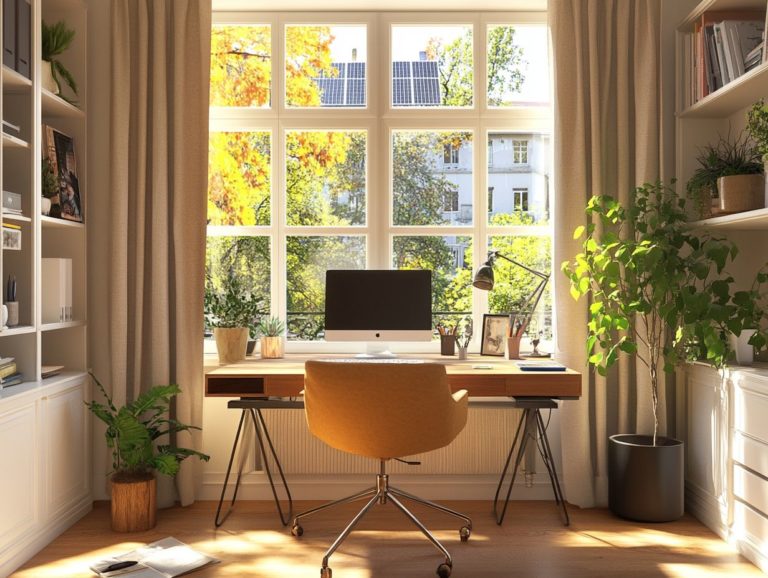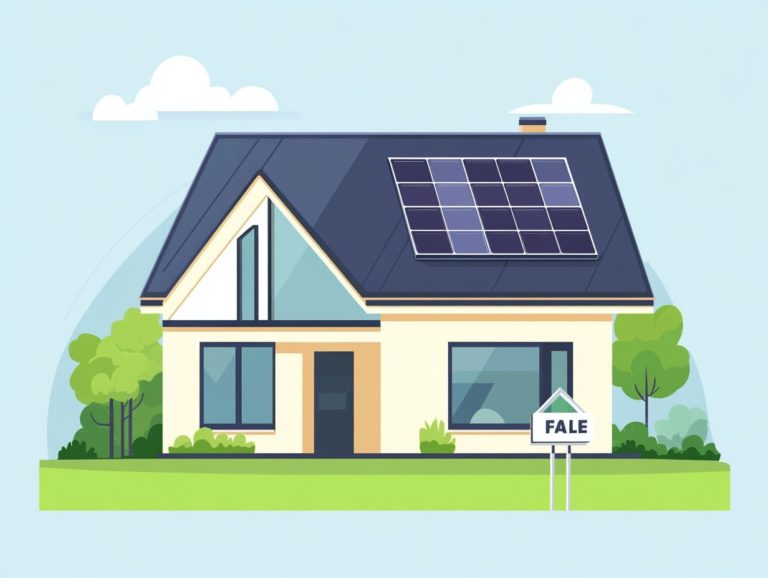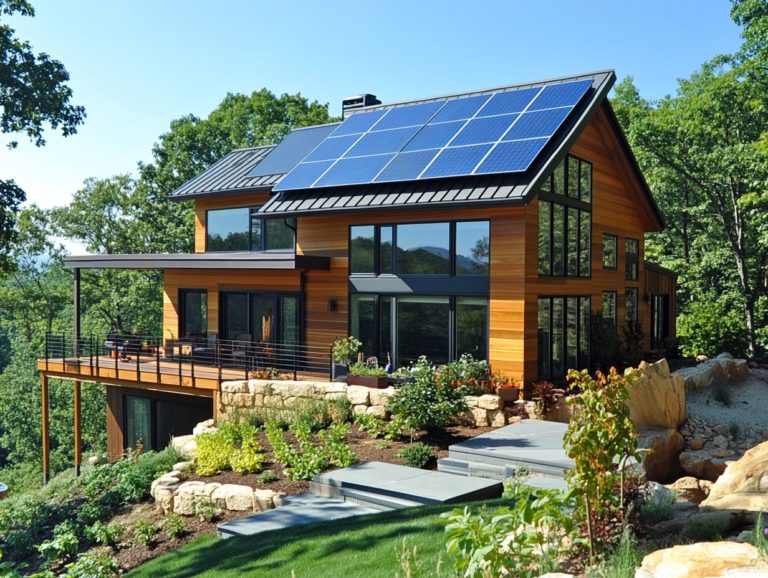How to Use LED Lighting for Efficiency?
LED lights have revolutionized the way you illuminate your spaces. They provide brighter light, substantial energy savings, and environmental benefits.
This guide explores the benefits of LED lighting, highlighting its energy efficiency and low electricity consumption.
You ll learn how to choose the right LED options tailored to your needs, such as LED strip lights. We ll also cover best practices for installation and maintenance, plus tips to maximize energy-efficient solutions.
Transform your home or business today with the power of LED lighting!
Contents
Key Takeaways:
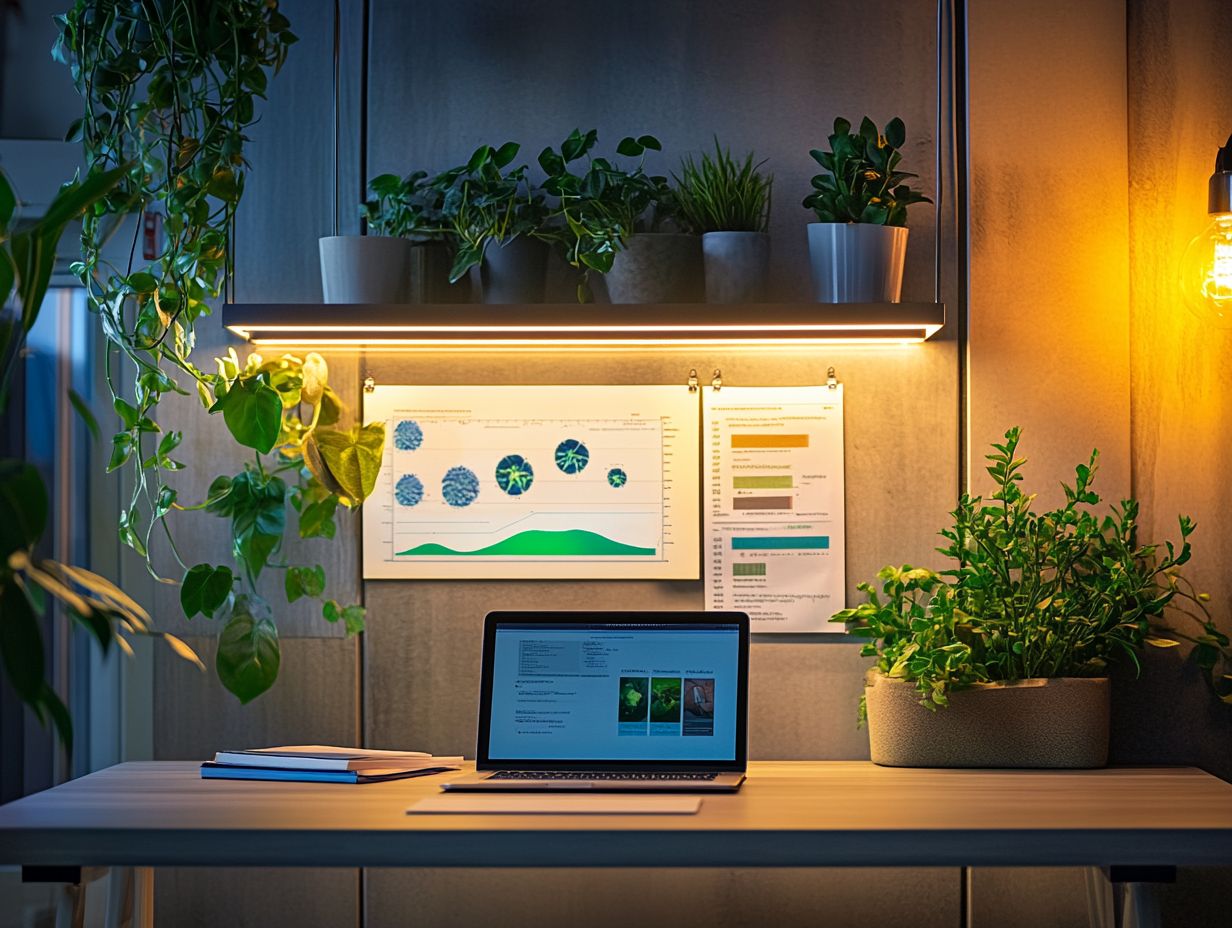
- LED lighting is a highly efficient and cost-effective option, offering energy savings of up to 80% compared to traditional bulbs.
- Choosing the right LED lights involves considering factors like color temperature, brightness levels, and application for maximum efficiency.
- Proper installation and maintenance are crucial for getting the most out of LED lighting, including using timers and sensors, and recycling old bulbs.
What is LED Lighting?
LED lights represent a remarkable advancement in illumination. Opting for LEDs over traditional incandescent bulbs, halogen bulbs, and compact fluorescent options offers enhanced energy efficiency and longer lifespans.
LEDs produce high-quality light while consuming significantly less electricity, making them an intelligent choice for any modern space.
At the heart of LED technology are light-emitting diodes that emit light when an electrical current flows through them. This mechanism reduces energy waste and minimizes heat output, addressing a major flaw of incandescent and compact fluorescent bulbs.
The evolution of lighting has moved from less efficient options to more sustainable alternatives, with fluorescent lighting and halogen bulbs paving the way for the rise of LEDs.
Verde Solutions is leading this shift, promoting energy-efficient lighting that reduces environmental impact and results in cost savings for consumers.
Benefits of Using LED Lighting
Embracing LED lighting brings numerous advantages that enhance your experience and commitment to environmental sustainability. You ll enjoy significant energy savings due to lower power consumption and light output.
The remarkable lifespan of LED products far exceeds that of traditional lighting options. This not only enhances your space but also contributes to reducing overall energy costs, making it a smart choice for both your wallet and the planet.
Energy Efficiency and Cost Savings
Energy efficiency is crucial for modern lighting solutions. You’ll find that LED lights truly shine in this regard, offering significant cost savings over time. By reducing electricity consumption measured in watt-hours, switching to LED technology will lower your energy bills and provide a sustainable approach to lighting.
In fact, LED lights consume approximately 75% less energy than traditional incandescent and halogen bulbs. They can last up to 25 times longer, leading to a dramatic decline in replacement costs. For instance, replacing ten 60-watt incandescent bulbs with 9-watt LED equivalents could save you around $100 in energy costs over their lifespan, based on average usage and electricity rates.
Switching to LED lighting not only puts more money back in your pocket but also helps reduce your carbon footprint. This aligns with eco-friendly initiatives and promotes a positive environmental impact. Additionally, considering the best smart lighting solutions for energy efficiency could result in nationwide energy savings sufficient to power millions of homes annually.
Environmental Impact
The environmental impact of your lighting choices is significant. Opting for LED technology offers a more eco-friendly alternative to traditional bulbs. Unlike incandescent, compact fluorescent lights, and halogen bulbs, LEDs are free of toxic materials. Their energy-efficient operation dramatically reduces energy consumption, positively contributing to environmental sustainability.
Embracing this technology can lead to a remarkable decrease in greenhouse gas emissions. These lights consume up to 80% less energy compared to traditional options. This reduction is directly linked to lower demand from power plants, which often rely on fossil fuels.
It’s essential to be mindful of how to dispose of and recycle old bulbs properly. Improper disposal can release harmful substances into the ecosystem. Promoting recycling within your community, especially for lighting solutions, helps mitigate further environmental harm and champions a more sustainable future in lighting.
Choosing the Right LED Lights

Finding the right LED lights can be an exciting journey! Pay careful attention to important factors, such as brightness levels, color temperature, and LED compatibility, ensuring that your lighting needs are met with precision.
Choose products with UL certification for safety and quality. This allows you to make a confident and reliable choice for your lighting solutions.
Factors to Consider
When selecting LED lights, several factors come into play, including the compatibility of the LEDs with your existing fixtures and the design flexibility they offer for various applications. Understanding how colors appear under light and opting for dimmable LEDs can significantly enhance your lighting experience, especially in settings where illumination systems matter.
Design flexibility allows you to get creative with installations, whether you re considering under-cabinet lighting, recessed fixtures, or accent illumination. A higher quality of light ensures that colors appear vibrant and true to life, which is especially crucial in spaces where aesthetics matter think galleries or your home.
Dimmable options enhance the versatility of your environment. You can transition from bright, energetic lighting for tasks to soft, ambient light for relaxation, creating customized lighting experiences. These elements collectively influence not only the beauty of your space but also its functionality, setting the perfect tone for various activities and moods.
Installation and Maintenance of LED Lighting
The proper installation and maintenance of LED lighting systems are essential for maximizing their performance and longevity, especially through effective thermal management. By understanding the significance of thermal management and choosing high-quality LED fixtures, you can boost their durability and ensure consistent light output, leading to better energy efficiency.
So, don’t miss out on the incredible benefits of choosing the right LED lights today! Explore the latest LED options to brighten your space sustainably!
Best Practices for Installation
To truly maximize the performance of your LED lighting, it’s essential to follow best practices during installation, particularly regarding thermal management and electricity use. Properly installed LED fixtures enhance longevity and optimize your overall lighting solutions.
Securely mounting fixtures is critical to prevent vibrations and movement that could lead to premature failure. Use appropriately rated cables to avoid overheating and electrical hazards, which can jeopardize your fixtures’ durability. Adhering to local electrical codes and product specifications ensures both safety and compliance.
Don’t overlook heat dissipation methods. Adequate spacing between fixtures and the use of heat sinks help dissipate heat, keeping your LED lights at optimal temperatures. By preventing heat stress, you ensure they maintain their efficiency over time.
Maintenance Tips for Longevity
Regular cleaning and inspecting connections are essential to keep your lights shining bright! Simple practices significantly enhance the longevity and performance of your LED lighting systems.
Not only does regular cleaning elevate the visual appeal of your fixtures, but it also maximizes light output, which can ultimately lead to reduced energy consumption. On the flip side, neglecting these tasks can cause your systems to work overtime, driving up energy costs and diminishing their lifespan.
Schedule periodic inspections to evaluate bulb functionality and promptly replace any aging components. By implementing these straightforward maintenance strategies, you can secure optimal performance and energy efficiency, making your LED systems a truly cost-effective lighting solution in the long run.
Additional Tips for Maximizing LED Efficiency
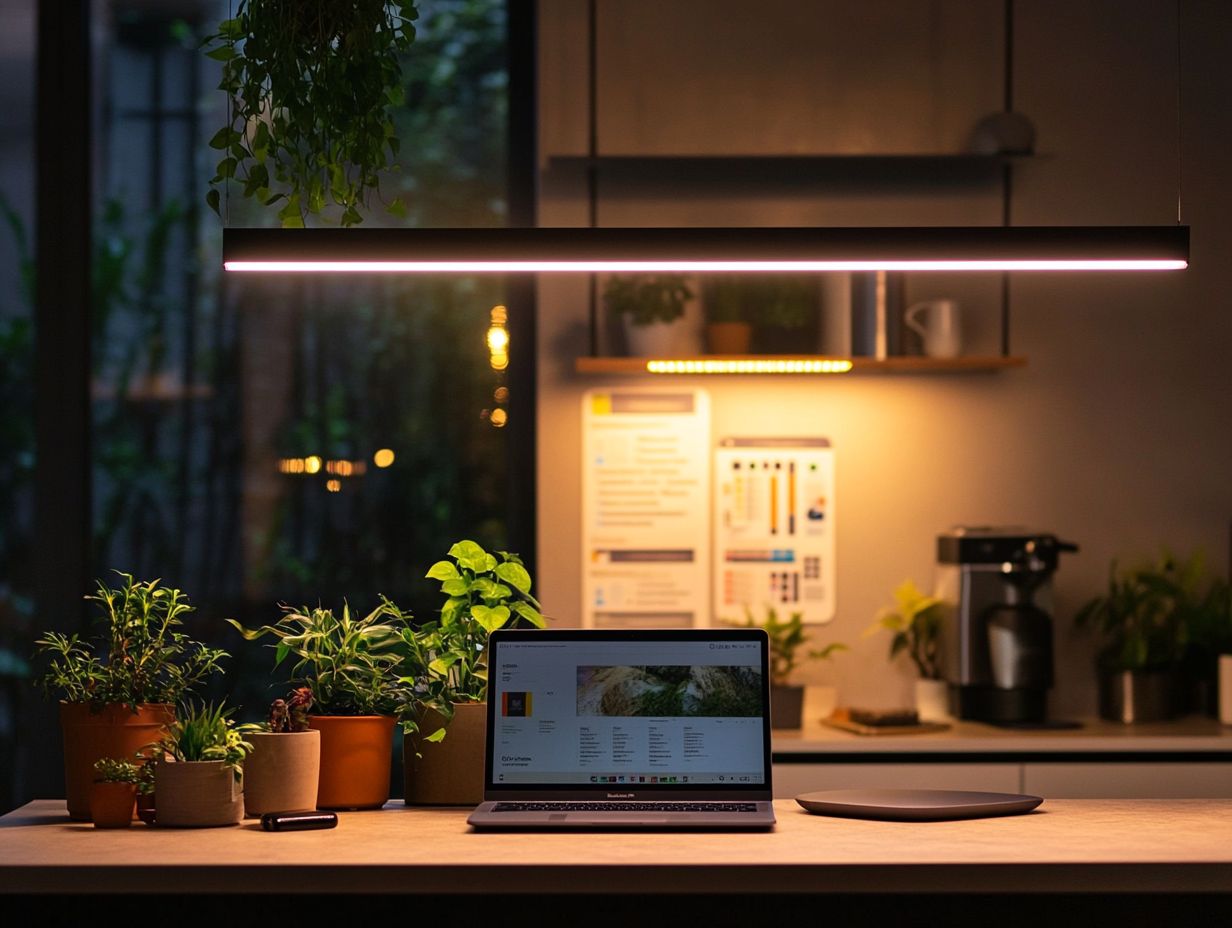
To unlock the potential of LED technology, consider incorporating additional tools like timers and sensors. These tools help you save electricity and customize your lighting.
These solutions optimize your electricity consumption and offer opportunities to create customized lighting experiences that align perfectly with your personal preferences, enhancing your overall illumination systems.
Using Timers
Incorporating timers into your LED lighting system greatly enhances energy efficiency and provides effortless control over your lighting environment. Timers help you establish specific lighting schedules that align with your daily routines, ensuring that lights are only on when truly necessary.
Using Sensors
Integrating sensors into your lighting setup can automatically activate the lights upon entering a room and switch them off once the area is vacant, optimizing energy savings.
For example, in office buildings, implementing these systems can lead to significant savings by cutting electricity costs during non-working hours and minimizing energy waste in common areas. Homeowners also benefit; in spaces like garages or hallways, lights will only illuminate when needed, offering both convenience and environmentally friendly practices. Moreover, using high-quality LED fixtures can further improve energy efficiency.
Start optimizing your LED lighting today for maximum energy savings and efficiency!
Proper Disposal of Old Bulbs
Properly disposing of old bulbs is crucial for minimizing your environmental impact. It also ensures the safe handling of toxic materials they may contain.
When compact fluorescent bulbs are discarded improperly, they can release hazardous substances like mercury. This poses serious risks to both wildlife and human health.
Many communities offer specialized drop-off locations for recycling these bulbs. Some retailers also offer take-back programs to help you return used lighting products safely.
Knowing your options empowers you to make choices that protect our planet while managing your waste responsibly.
Frequently Asked Questions
What are LED Lights?
LED lights are energy-efficient bulbs that last much longer and use less energy than traditional options. They can significantly reduce your energy bills.
What Types of LED Lighting Can Improve Efficiency?
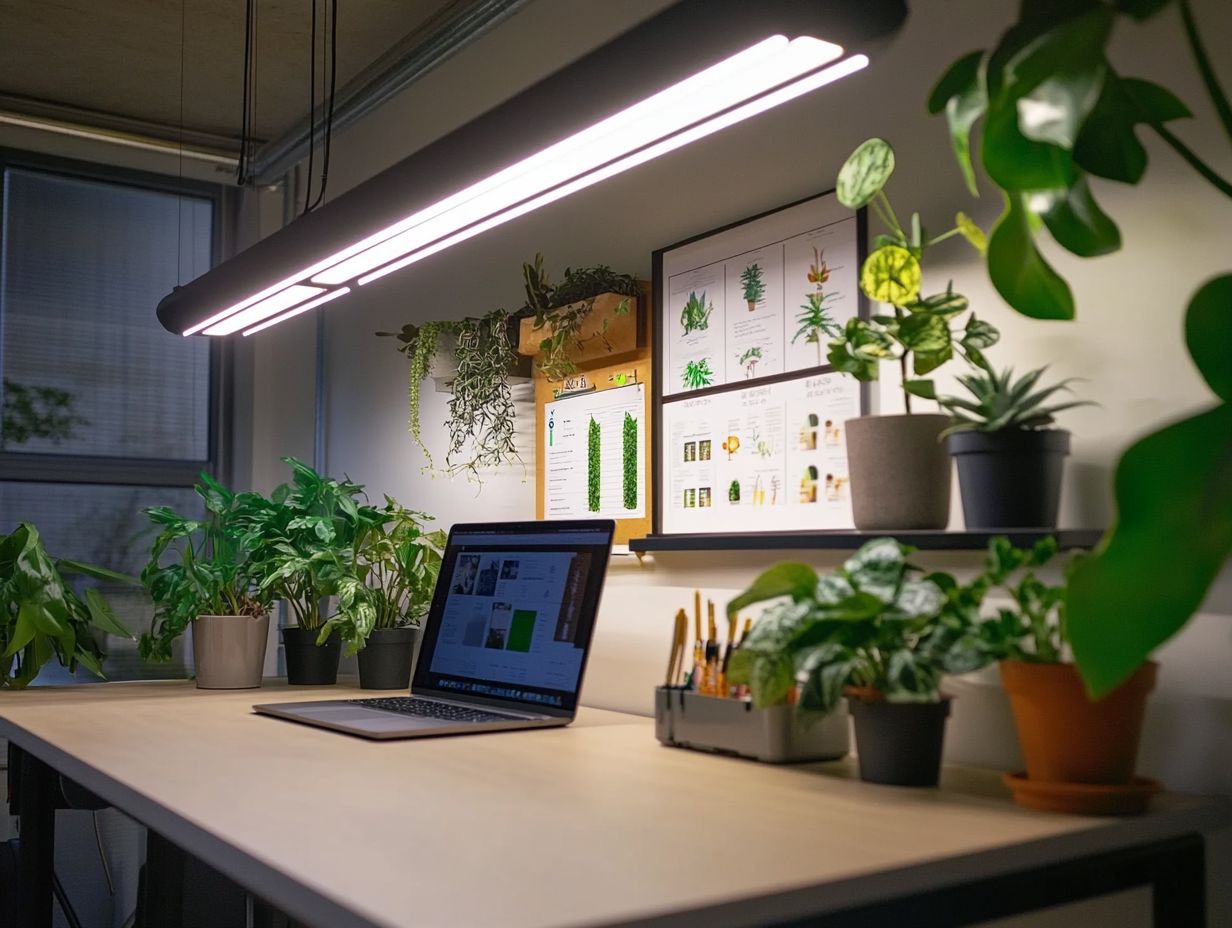
You can choose from LED strip lights, bulbs, and panels. Each type has unique benefits for different settings.
How Can I Save Energy with LED Lighting in My Home?
Replace incandescent or fluorescent bulbs with LED bulbs to save up to 75% in energy costs. Use LED strip lights or panels to enhance any room’s lighting.
Can LED Lighting Be Used in Commercial Settings?
Yes, LED lighting is ideal for businesses due to its high energy efficiency and long lifespan. This choice can lead to substantial cost savings.
What Are the Benefits of LED Lighting Outdoors?
LED lighting is durable and can withstand harsh weather. It uses less energy than traditional bulbs, reducing costs and promoting sustainability.
How Can I Maximize Efficiency with LED Lighting?
Choose the right LED for your needs. Properly position and consider using dimmable LEDs or smart controls to save even more energy.

